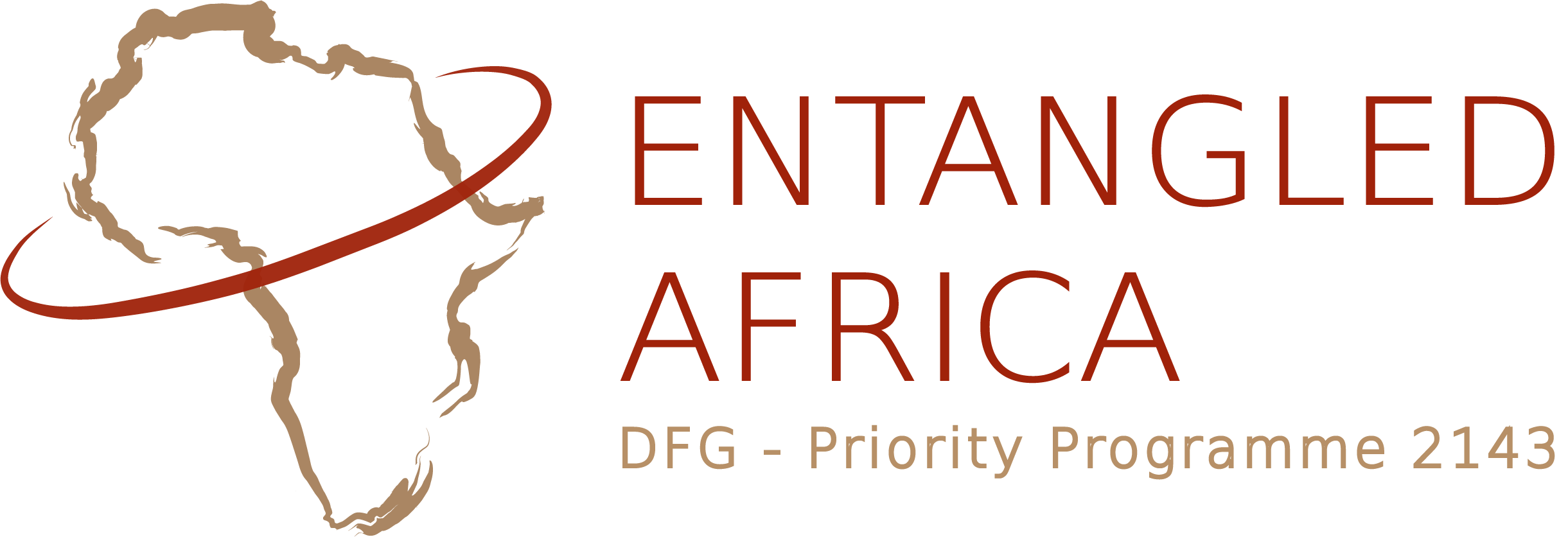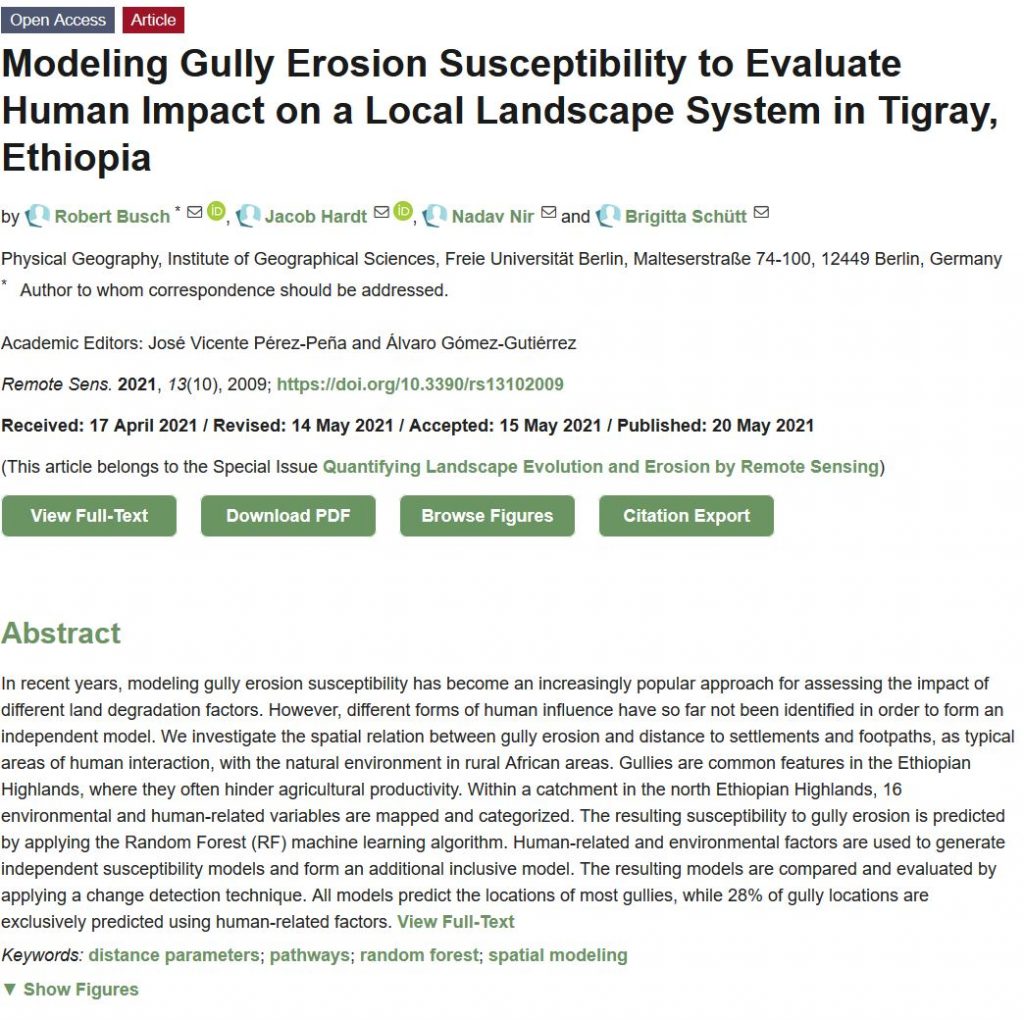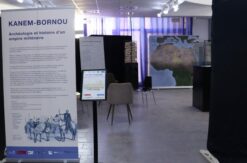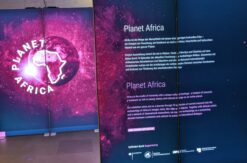Logo: [Attribution: unknown; Copyright: Remote Sensing]
R. Busch – J. Hardt – N. Nir – B. Schütt, Modeling Gully Erosion Susceptibility to Evaluate Human Impact on a Local Landscape System in Tigray, Ethiopia, Remote Sensing 13, 10, 2021, 2009, doi: 10.3390/rs13102009.
Full Text | PDF Download
Abstrakt (Quelle: MDPI Open Access Journals):
In recent years, modeling gully erosion susceptibility has become an increasingly popular approach for assessing the impact of different land degradation factors. However, different forms of human influence have so far not been identified in order to form an independent model. We investigate the spatial relation between gully erosion and distance to settlements and footpaths, as typical areas of human interaction, with the natural environment in rural African areas. Gullies are common features in the Ethiopian Highlands, where they often hinder agricultural productivity. Within a catchment in the north Ethiopian Highlands, 16 environmental and human-related variables are mapped and categorized. The resulting susceptibility to gully erosion is predicted by applying the Random Forest (RF) machine learning algorithm. Human-related and environmental factors are used to generate independent susceptibility models and form an additional inclusive model. The resulting models are compared and evaluated by applying a change detection technique. All models predict the locations of most gullies, while 28% of gully locations are exclusively predicted using human-related factors.





